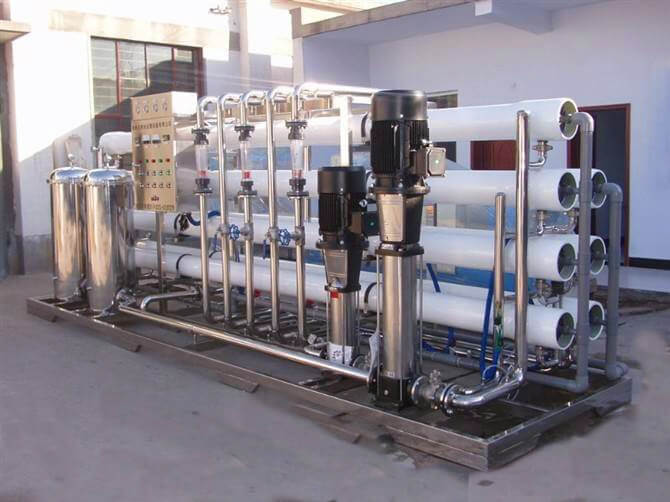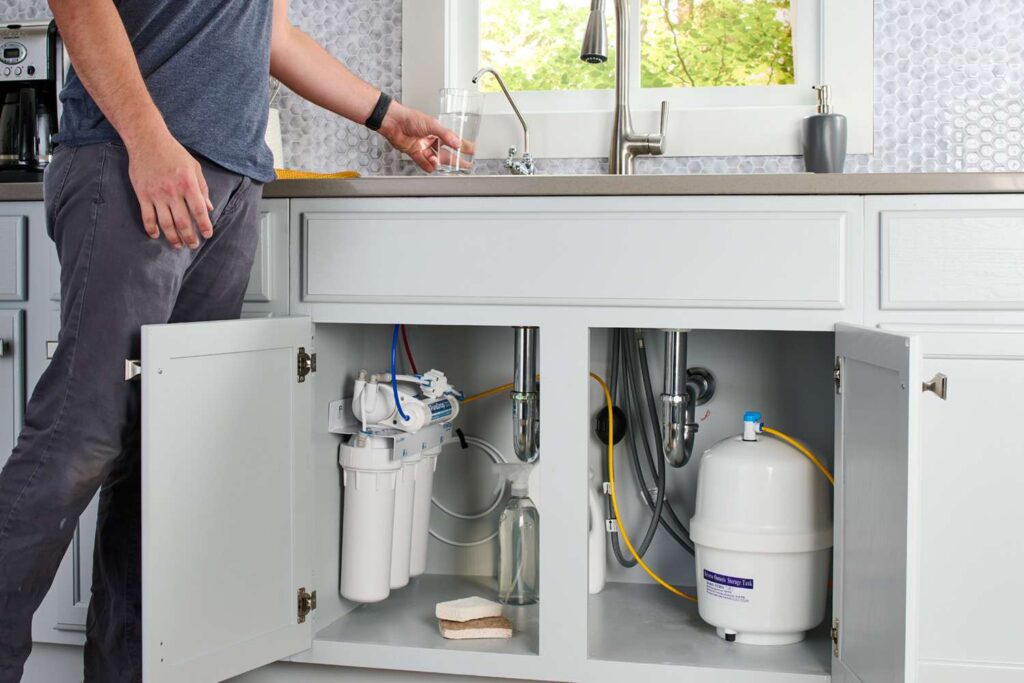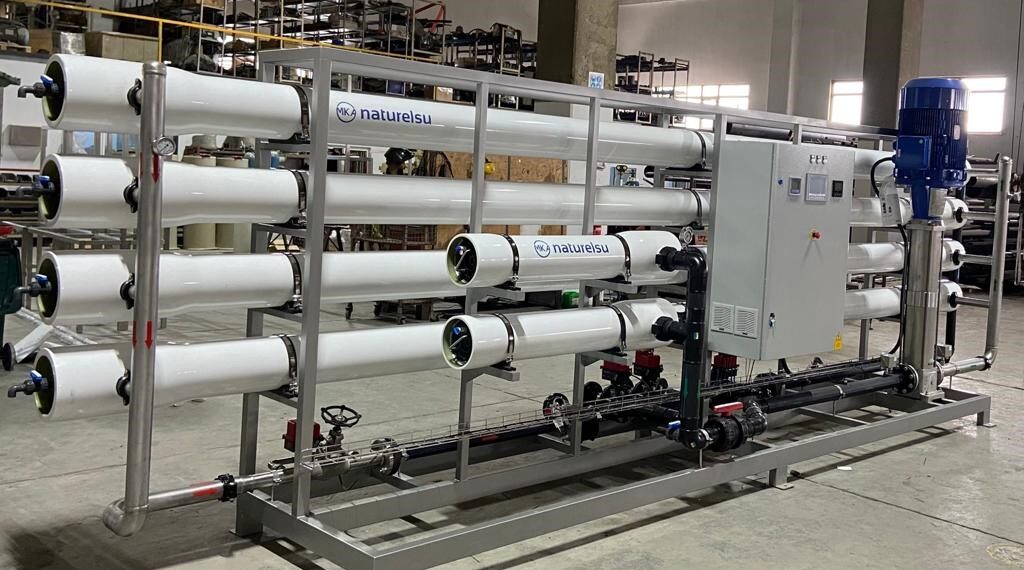Learn about Applications of Reverse Osmosis Technology. Investigate the multiple uses of reverse osmosis technology in purifying water and desalination, for industries, etc. Learn more about its elements, benefits, impacts, and what to consider in choosing the right system that gives clean safe water.
Introduction to Reverse Osmosis (RO) Technology
RO, also known as one of the oldest aquaculture techniques, has been known for quite a long time as one of the most effective technologies for the purification of water from contaminants, impurities, and unwanted substances. In this method, the water is forced through some semi-permeable membrane, whereas large contaminants get left behind and tiny water molecules pass through the membrane into the pure water side.
RO technology has positively affected how human beings receive clean drinking water, thus making it a part of every household, industry, and large desalination plant The growing demand for quality water has made RO a foremost choice for providing safe and pure drinking water.

Key Components of a Reverse Osmosis System
- Pre-filters: Pre-filtration filters out bigger particles, sediments, and chlorine feeding into the RO membrane. This prevents damage to the membrane, then its potential subsequent clogging, to ensure enough functionality of the system and a longer lifespan of the RO parts.
- RO Membrane: The RO membrane is the system’s heart. It employs pressure to allow the passage only of water molecules, while the RO membrane blocks dissolved solids, contaminants, salts, and larger particles. This filtration process guarantees that the water is of superior micropurity, as any impurities are removed from the raw water supply.
- Post-filters: Post-filters improve the purified water taste and quality. After leaving the RO membrane, post-filters polish the water by removing residual odors, chlorine, and trace contaminants. Thus, the water from the post-filters is clean and pleasant to drink.
- Storage Tank: The purified water, post-RO filtering, is stored in a tank. This tank acts as a pressurized water storage for use as necessary. This component provides an assured continuous supply of clean water even in between filtration periods.
- Faucet: The faucet is the outlet for purified water for user convenience in drawing the water. The faucet is designed so that purified water flows from one outlet, while untreated water flows from another. It ensures that only clean filtered water is consumed, and therefore it is an important part of water accessibility.
Advantages of Reverse Osmosis
1. Improves Taste
Supposedly, reverse osmosis beautifies the taste of water by ridding it of chlorine, chemicals, and bad odors. The result is pure fresh water, which can now be pleasantly sipped or used in the cooking process, thus enhancing the quality of water used in almost all day-to-day activities.
2. Energy Efficient
RO setups are energy-wise designed for low energy consumption, unlike other methods of water treatment. Operation therefore requires less power, which has a low overall energy consumption. Such energy savings make the RO system friendly to the ecosystems of households and industries through energy conservation and water purification.
3. Removes Contaminants
Another great benefit of reverse osmosis systems is that the canto removes a wide variety of contaminants, including bacteria, viruses, salts, and heavy metals, leaving water safe, clean, and devoid of these harmful agents, thus promoting good health and safety.
4. Easy to Maintain
Maintenance for reverse osmosis systems is low. Filters and membranes need to be replaced regularly; otherwise, the system goes without maintenance. Many of the systems are designed to be easily maintained by the user, which greatly streamlines the process for home and business owners to keep the systems up and running at a low cost.
5. Money Saver
Investing in a reverse osmosis system nets savings in the long term. Bottled water will not be needed since purified water is available on demand, trimming long-term costs. Furthermore, RO systems can lengthen the lifetime of appliances by reducing mineral accumulation.
6. Removes Minerals
In removing calcium and magnesium, which precipitate as mineral hardness, reverse osmosis effects are brought together with a resulting prevention from scale in pipes and appliances. This ensures a longer life for equipment and household applications and better usage efficiency for industrial applications.
Key impacts of RO technology
- Brine Waste Generation: Brine, or highly concentrated saline water, is one of the main byproducts of reverse osmosis. The main disposal problem is created by the vast amount of salt when inappropriately handled or released, which can damage the marine environment and pollute neighboring water sources.
- Impact on Aquatic Life: The brine and other chemical discharge from reverse osmosis processes can cause serious repercussions in the marine realm. The increased salinity along with the trace pollutants can also destroy marine habitats, decrease biodiversity, and adversely affect organisms sensitive to changes in salinity or water quality.
- Coastal Ecosystem Disruption: The reverse osmosis desalination plants affect coastal ecosystems by changing the natural balance of water. The seawater intake generates thermal pollution, and changes the local salinity, thereby harming the fish population, and also affecting the coastal flora and fauna.
Applications of Reverse Osmosis Technology
Water Purification for Drinking Water
RO systems are extensively used in homes and businesses to deliver clean drinking water. They notably come into the picture when the water is contaminated or exhibits high levels of dissolved solids. They produce drinking water that tastes well and is free of certain contaminants.
Desalination
The function of reverse osmosis is indispensable in its role in efficiently separating seawater from drinkable water. The process catches all unwanted salt and minerals, giving one safe water to consume, agriculturally use, and even industrially fruitful areas where water shortage prevails.
Industrial Applications
In manufacturing industries like pharmaceuticals, food processing, and electronics, RO technology is in place to purify water for production. Products with superior quality and stability are assured by the removal of contaminants that can interfere with production and can seriously jeopardize public safety.
Aquarium and Fish Farming
The application of RO in the Aquaculture and aquarium industries helps protect water quality and removes chemicals, bacteria, among other toxic materials from the water to ensure there is a secure environment for both the fish and the aquatic productive plants, benefitting from good health supporting the growth.
Wastewater Treatment
Wastewater treatment plants apply RO technology to purify their waters. This ensures that the water is safe to use again. So by this process, reusing water becomes a stepping stone in our environment, while at the same time combatting the over-exploitation of our freshwater resources.
How Reverse Osmosis Works
The reverse osmosis mechanism states that through the phenomenon of osmosis, solvent molecules pass through the semi-permeable membrane across the region that has lesser concentrations of solutes to that area that contains the high concentration of solutes.
Reverse osmosis application is about forcing water across the membrane through the feed water by applying pressure to filter out unwanted agents, such as salts, bacteria, viruses, and other pollutants.
The Reverse Osmosis Process
The process begins with the unfiltered water entering the system and flowing through the first pre-filters, which eliminate larger contaminants (like dirt, sand, and chlorine) before the water enters the RO membrane under pressure, wherein separation occurs into RO water and contaminants.
The pure water gets collected and stored, while the contaminants that are rejected get sent down the drain as wastewater. The post-filters make sure that any remaining impurities or tastes are eliminated before the water is delivered to the tap.
Choosing the Right Reverse Osmosis System
1. Water Quality Analysis
To assess specific contaminants before the actual installation of an RO system, an analysis of the water quality must be made. Testing would tell how many dissolved solids, chemicals, and microorganisms are present in the water so that the choice of an appropriate system would be able to address the water quality problems effectively to suit the purification requirements.
2. Membrane Selection
Choose reverse osmosis membranes according to the water quality, contaminants, and capacity of the system. Different membranes target specific parameters such as heavy metals or salts. The right selection of membranes ensures maximum filtration efficiency, long-time servicing, and better protection against contaminants in the delivered purified water.
3. System Design
The design of the reverse osmosis system must therefore resonate with the user’s specific requirements concerning flow rates, capacities, and filtration stages. Well-designed systems will perform exceptionally well, enable ease of maintenance, and confer probable purification reliability. Consideration must be made about space availability, user-friendliness, and upgradeability.
4. Flow Rate
Flow rate is the amount of purified water produced by a system in a certain time. Selecting a system with an appropriate flow rate for your water consumption requirements ensures a continuous supply of clean water for your usage without any performance hindrance.
5. System Size and Installation
Although reverse osmosis systems range in size from those that can be placed under one sink and small units to those installed to treat all water entering the house, make sure the system you choose fits available space and its installation requirements. Larger systems may require professional installation, while smaller ones can be installed by the user, allowing flexibility on where they are set up
Limitations of Reverse Osmosis Technology
- High Costs: Reverse osmosis systems can be pretty pricey when it comes to large-scale applications for installation as well as operation. Generally, project initiation costs involving the unit, filters, and membranes with a continuing maintenance cost are a fair investment.
- Water Waste: Water wastage is another area of concern wherein RO technology finds itself to falter greatly. The rejected stream that goes down drains with wastewater would be measured in multiples of the purified water; thus, such systems are deemed to be very inefficient where wastage of water is governed by the scarcity of water.
- Maintenance Requirements: Maintenance is the operating cost and requirement for RO efficiency. Filters and membranes will need to be replaced over some time, and this is an added expenditure. If not properly maintained, the operating efficiency of the system will go down, thus affecting the system in the long term with poor water quality and performance.

Future of Reverse Osmosis Technology
The path peppered with possibilities stands before reverse osmosis technology, where the emphasis will be on future research focused on suitable improvements to enhance efficiency and reduce water wastage.
Energy recovery devices and ever-improving membranes make RO systems more sustainable and affordable. Another area for R&D is handing RO an overhaul in cleaning water into art by designing hybrid systems that maximize its performance for supplying clean and safe water through integration with other purification methods such as UV or activated carbon.
Conclusion
The use of reverse osmosis technology is a cutting-edge water purification method that is now essential for water treatment, desalination, and several industrial processes. Understanding how reverse osmosis works and its advantages and limitations further places it in the context of our daily lives and that of pure water. As technology advances, reverse osmosis systems will be designed to become even more efficient and sustainable to bring benefits to communities and industries throughout the world.






